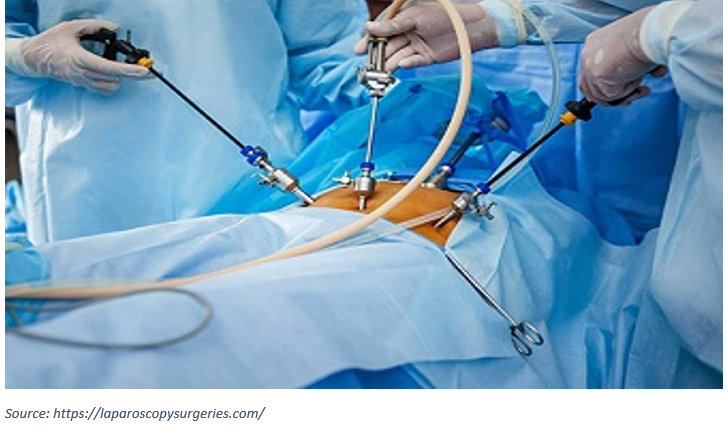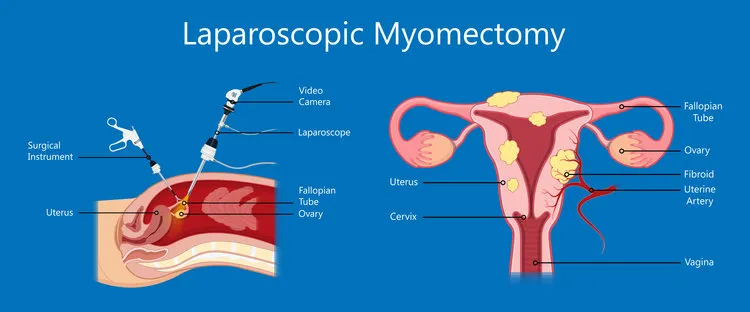Are you suffering due to excessive bleeding during your menstrual cycle? It could be Fibroids. Fibroids are an overgrowth of the tissues lining the uterus, sometimes even out of the uterus. Most of the time, these growths are non-cancerous but can put a lot of pressure on the ovaries if the growth is outside the uterus.
Consult Dr. Shweta Shah, the best Gynaecologist you will come across in Malad, to help you through your healing journey. Dr. Shweta believes that every woman should be passionate about her health and lead an active lifestyle to avoid gynecological issues in the first place.
However, every woman experiences gynecological issues at some point in their life which should be treated in time. Myomectomy is one of the many treatment options available to remove fibroids.
Please continue reading to learn more about laparoscopic myomectomy surgery in Mumbai, and your doubts will get addressed here itself.
What is Myomectomy?
Myomectomy is a surgical procedure carried out to remove uterine fibroids. Most of the time, fibroids occur during childbirth, but they can occur at any age.
Why is Laparoscopic Myomectomy done

Dr. Shweta Shah explains that uterine fibroids can be treated using surgical or non-surgical methods.
Surgical removal can be done by two approaches. Removing the fibroids can be done either by the traditional open abdominal surgery or a minimally invasive laparoscopic surgery.
If the fibroid is big in size, it is shrunk with the help of radiation therapy and then removed laparoscopically.
Carrying out this myomectomy surgery using a laparoscope needs specialized training, and you should approach only the best gynecologist in Malad if that is close to your vicinity. Dr. Shweta Shah is among the best gynecologist and obstetricians in Malad who is a trained laparoscopic surgeon and can give good results of laparoscopic myomectomy surgery in Mumbai.
The doctor aims at removing only the fibrous tissues without damaging the uterus, unlike in a hysterectomy. In a hysterectomy, the entire uterus is removed from the body. This is an extreme step that the doctor has to take in extreme circumstances.
You are likely to wonder if
Is laparoscopic myomectomy suitable for all fibroids?
Dr. Shweta explains that there are different types and sizes of fibroids, and surgery largely depends on them. Laparoscopic surgery is suitable for fibroids smaller than 14 cms and is easily approachable.
- The fibroid can be within the uterus and is called intramural fibroid.
- The fibroids bulging into the uterine cavity is called the submucosal fibroid and
- The fibroids that grow outside the uterus are called Subserosal fibroids.
- Depending on how deep and what is the size of the fibroids, your doctor takes a call. For a deep or large fibroid, abdominal surgery is thought to be the best option.
Is laparoscopic myomectomy safe?
Yes, Laparoscopic and Robotic myomectomy is a safe procedure, but again it depends on a lot of factors like
- The expertise of your gynecologist. Approach only the best gynecologist in Malad.
- The location of the fibroids
- The size of the fibroids.
And like any other surgery, there are chances of
- A reaction to anesthesia
- Excessive bleeding
- Infections
- Damage to other organs
- Blood clots post-surgery.
- Also, during the surgery, if your surgeon finds more fibroids, then there are chances that it will convert to an abdominal myomectomy.
Benefits of Laparoscopic Myomectomy treatment:
Laparoscopic surgery is anytime better than abdominal myomectomy since
It is minimally invasive; it is scarless, has less blood loss, lesser chances of damage to internal organs and scar tissue formation, quick recovery, and less hospitalization duration.
Also, if you are planning to conceive, then laparoscopic myomectomy is the safest choice, says Dr. Shweta Shah, one of the best gynecologists in Malad.
Recovery Tips for the patient:
Once the myomectomy is complete, the uterus takes time to heal. The healing of your uterus depends on
- The type of fibroid,
- The size of the fibroid removed
- The number of fibroids removed.
- Type of surgery
- Surgery complications, if any.
- Any autoimmune disorder like diabetes.
Dr. Shweta Shah suggests avoiding extensive physical activity during the recovery period, including no heavy workouts, lifting weights, etc. At the same time, she also states that you should keep moving and doing your regular day–to–day activities to avoid surgery scar tissue and clots.
Under normal circumstances, the uterus heals in up to 6 weeks. Dr. Shah advises that you avoid pregnancy for at least 6 months after the myomectomy.
Conclusion:
Dr. Shweta Shah, the best gynecologist and obstetrician you can find in Malad, says that myomectomy is not a permanent solution to fibroids. But it is the only option you have if you want to preserve your uterus for future pregnancy.
However, there are complete chances of recurring uterine fibroids.

